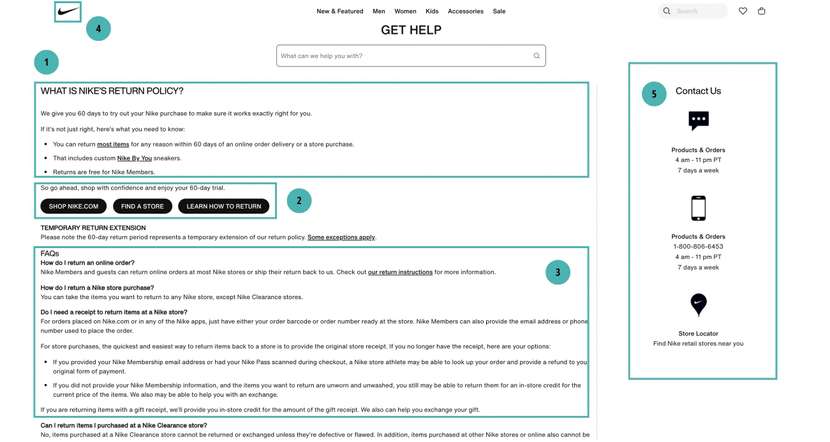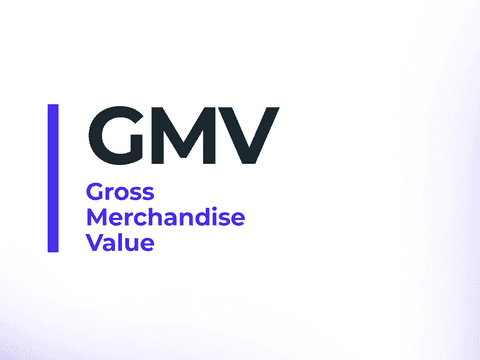Every online store should have a return policy that allows customers to return items they are not satisfied with. In addition to being a legal requirement, it is a fundamental part of your customer experience. By incorporating efficient tools, such as a product returns management platform, you can streamline the process, making it easier for both your team and your customers. Discover how to create a top-notch return policy that will generate sales, reduce costs, and build stronger customer trust.
Why you need an eCommerce return policy
According to a study by the National Retail Federation, 70% of consumers have returned an online purchase in the past year. This is due to a number of factors, such as the inability to see or try products before purchasing them, or the product not meeting expectations.
A clear and flexible return policy helps customers feel confident when shopping online. When customers know they can return a product if they are not satisfied, they are more likely to buy. This can lead to increased sales and improved customer satisfaction.

How to write an eCommerce return policy
A return policy is a document that establishes the terms and conditions under which customers can return a product purchased online. It is important to have a clear and transparent return policy to avoid legal problems and ensure customer satisfaction.
A return policy should include the following elements:
- Return period: The minimum return period required by law is 30 calendar days. However, many businesses offer a longer return period, such as 60 or 90 days.
- Exceptions: Some products are not subject to the right of withdrawal, such as personalized products, products that have been opened or used, and perishable products.
- Return procedure: The business must provide a clear and simple procedure for customers to request a return.
- Return costs: Return costs are borne by the customer, unless the business offers to return the product for free.
- Refund: The business must refund the customer the full purchase price, including shipping costs, within 30 calendar days of receiving the returned product.
In addition to these mandatory elements, businesses may consider including the following elements in their return policy:
- Reasons for return: The business may allow customers to return a product for any reason, or it may establish limits, such as only allowing returns for change of mind or for defective products.
- Exchange policy: The business may offer an exchange policy, which allows customers to exchange a product for another of equal or greater value.
- Defective products: The business must indicate how the customer should proceed if they receive a defective product.
Recommend to read
Unlock latest strategies and insights about return management by reading our comprehensive guide.
Tips for creating a perfect return policy in eCommerce
Here is the translation and localization of the Spanish text you provided:
1. Write clearly and concisely
A straightforward return and exchange policy is essential. If your policy is unclear, confusing, or contradictory, customers will be less likely to buy.
2. Place your policy in a visible place for your customer
The return policy should be visible on the website's homepage, checkout page, and product pages. This way, customers can easily view it before making a purchase.
3. Increase the available time to make a return
Offering a generous return policy gives customers more time to decide if they are satisfied with their purchase. This can help reduce the number of returns.
4. Be flexible
A flexible return policy gives customers peace of mind and reduces the risk of them being disappointed with their purchase. Here are some ways to make your policy more flexible:
- Offer different return methods, such as in-store return, home pickup, or mail return.
- Offer different types of refunds, such as cash refund, store credit, or exchange for another item.
- Allow customers to choose the carrier they will use to return the product.
- Offer free returns.
- Enable returns without logging in.
- Include a return label in the box.
5. Add a FAQ section
A FAQ section can help customers find answers to their questions about the return policy. This can help reduce the number of customer service calls.
6. Find out the reason for each return
Knowing why returns occur is essential to improving the customer experience. Allow customers to explain why they want to return a product. Outvio collects all return information and shows it to you in detail so you can optimize your strategies.
7. Keep your customers informed about the status of their returns
Return notifications are a way to keep customers informed about the status of their requests. This can help improve the customer experience and reduce customer service calls. You can also add offers and promotions to indirectly increase sales.
Example of a good eCommerce return policy

Nike, as one of the most prominent brands in the world, has perfected its customer experience through a returns and exchanges policy designed to provide convenience and confidence to its consumers. Here are key aspects of its returns policy:
1. Conditions
Nike offers a generous 60-day return policy from the date of receipt of the order. While there are exceptions for customized products, underwear, and items with obvious signs of use or washing, the company guarantees a lengthy period for customers to evaluate their products.
Nike offers free returns to those who are part of its membership program. This benefit not only encourages loyalty, but it also demonstrates a commitment to customer satisfaction.
2. Automation
Nike uses a returns and exchanges portal to automate the process. This approach significantly simplifies the customer experience, allowing them to process returns easily and quickly without any hassle.
3. Frequently asked questions
The brand addresses the most common questions about its returns and exchanges policy through a frequently asked questions section. This informative resource resolves customers' main concerns, providing clarity and transparency.
4. Integrated branding
Nike incorporates branding elements throughout the entire shopping experience, including its returns policy. This reinforces the brand identity and communicates a consistent commitment to quality and customer satisfaction.
5. Tracking and effective communication
Nike maintains active communication with its customers through automatic order notifications. Additionally, it facilitates contact through enabled channels and offers a store locator that allows customers to find the nearest store to make physical returns, thus improving convenience and accessibility.
Return and store credit policy template
Thank you for choosing [Brand Name] for your shopping needs. We strive to provide you with high-quality products, and we appreciate your trust in our brand. If, for any reason, you are not completely satisfied with your purchase, we offer a flexible return policy outlined below:
A) Return process
To initiate a return, please visit our [return portal URL] and follow the instructions provided. Ensure you have read and understood our complete return policy before starting the return process.
B) Return Period
Our product return policy allows returns within XX days from the date of purchase. After this period, we regret to inform you that we cannot accept exchanges or returns.
C) Return eligibility
To be eligible for a return, the item must be unused and in the same condition in which you received it, including the original packaging. Please note that certain items, such as YY and ZZ, are ineligible for returns.
D) Return approval
Once we receive your returned item, [Brand Name] will notify you of its arrival. If the return is approved, the refund will be processed in the form of store credit or the original payment method within approximately XX days. If there is a delay in the refund, we recommend checking your bank account and contacting your bank directly. If needed, feel free to reach out to us for assistance.
E) Return Shipping costs
Return shipping costs are [charged to the customer/free of charge/other possibilities]. Please review our return policy for specific details regarding shipping costs.
F) Processing time
The estimated time for the return process may vary depending on the location of the return. Please be patient, and we will do our best to process your return efficiently.
G) Special conditions
- Items on Offer: Specific conditions may apply to the return of items purchased during promotional periods or sales. Refer to our return policy for additional details.
- Gift Returns: If you received an item as a gift and need to return it, please contact our customer support for assistance.
- Other Special Conditions: Any unique conditions or exceptions to our standard return policy will be detailed in our comprehensive return policy document.
FAQ
What is a return policy in eCommerce?
The return and exchange policy is a set of rules and procedures that detail the conditions under which customers can return an item or request a change, as well as the time frames, costs, and processes involved.
Where to place the return policy
Once you have written your return policy, you should make sure it is available to customers before they make a purchase. The return policy can be available on the business's website, in the checkout process, or on the product packaging.
What happens if I don't have a return policy?
If you don't have a return policy, you will be subject to local laws. In the United States, the minimum return period required by law is 30 calendar days. However, it is recommended to have a clear and transparent return policy to avoid legal problems and ensure customer satisfaction.




